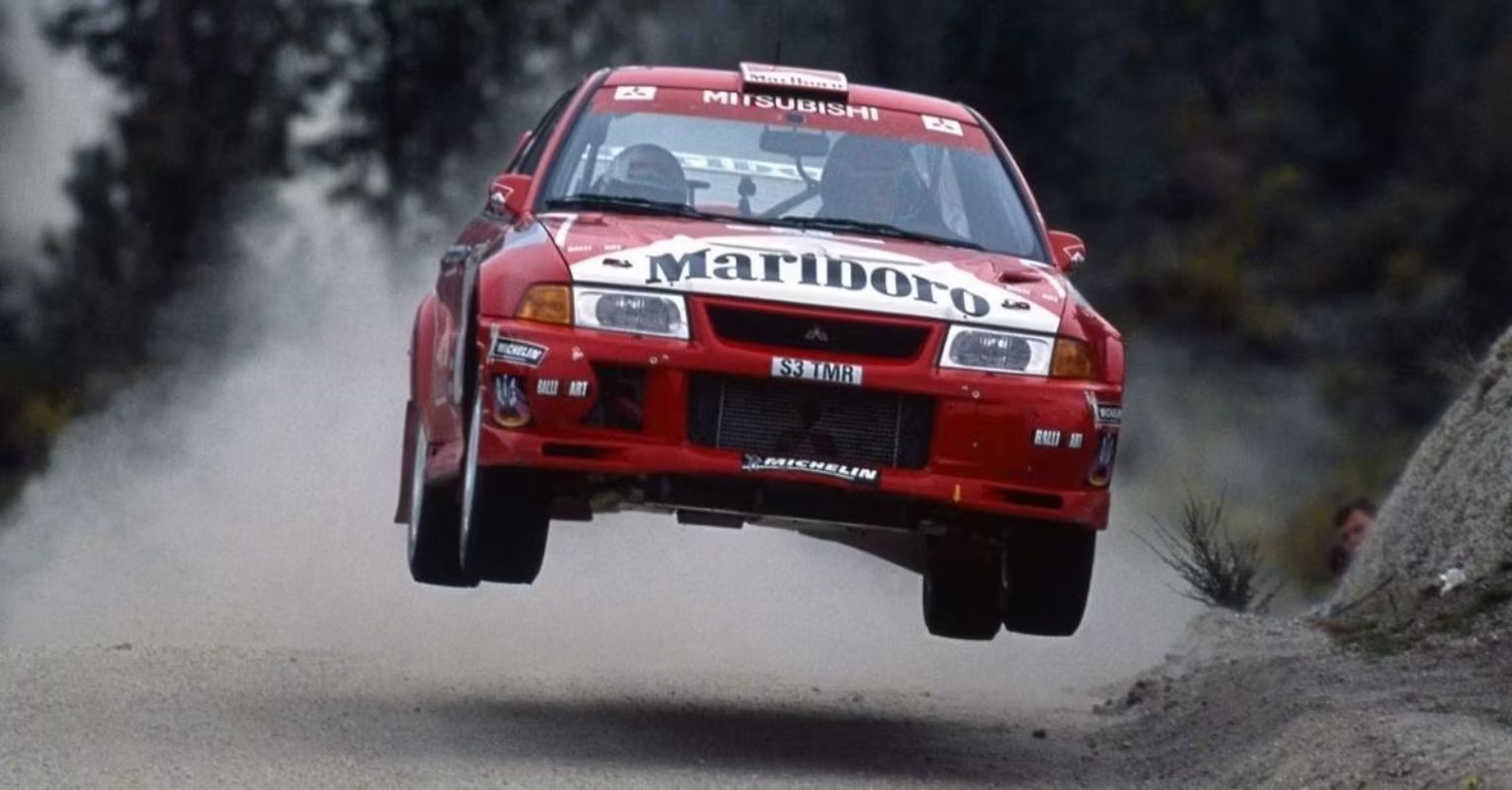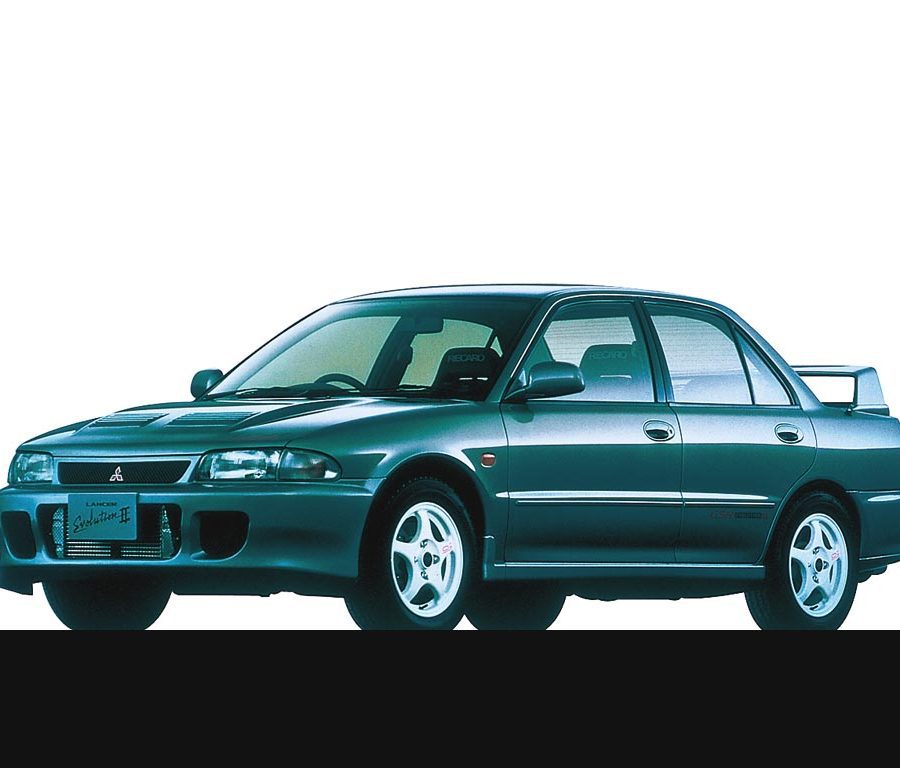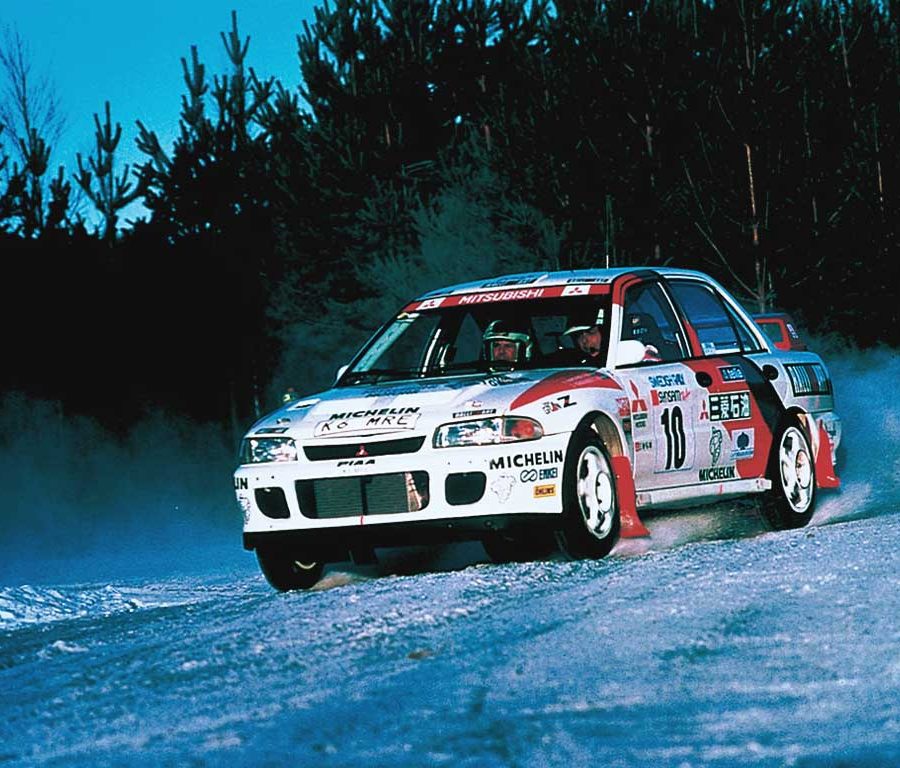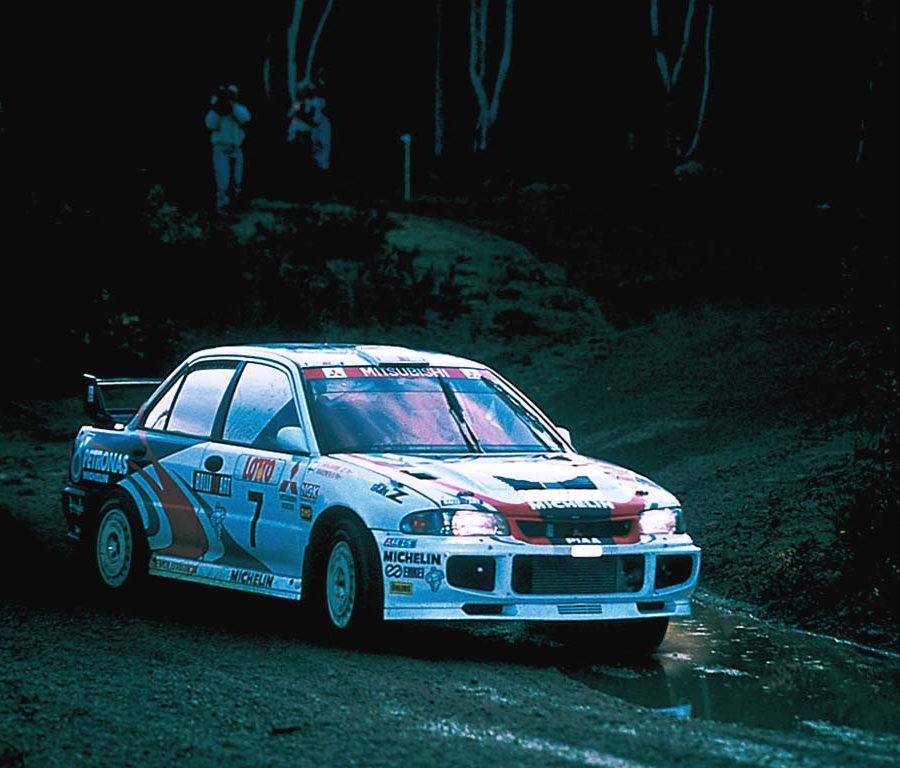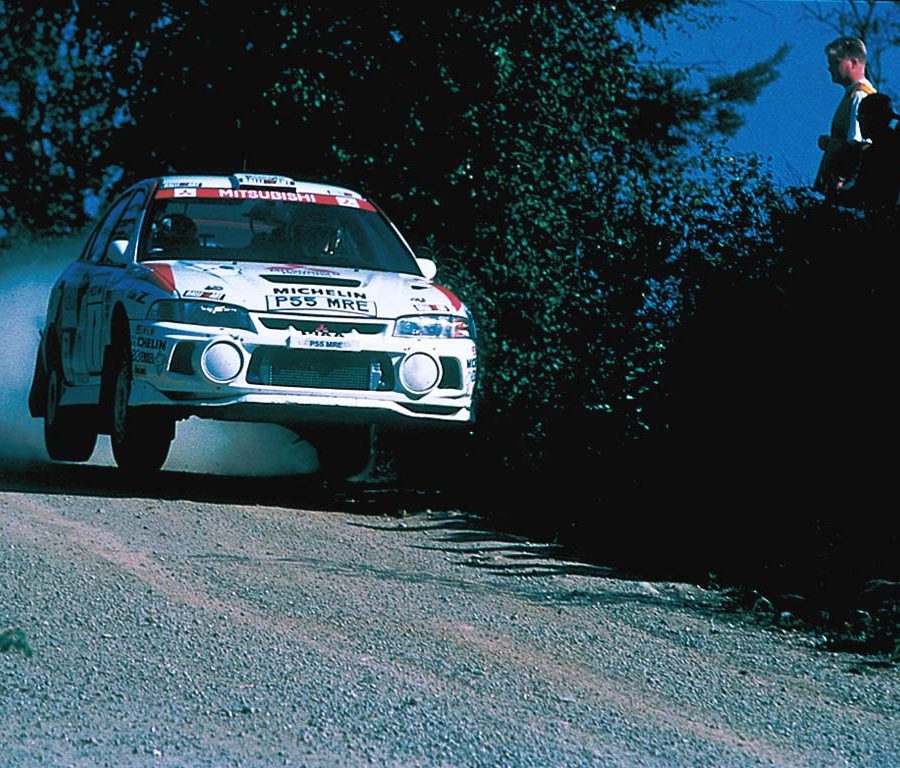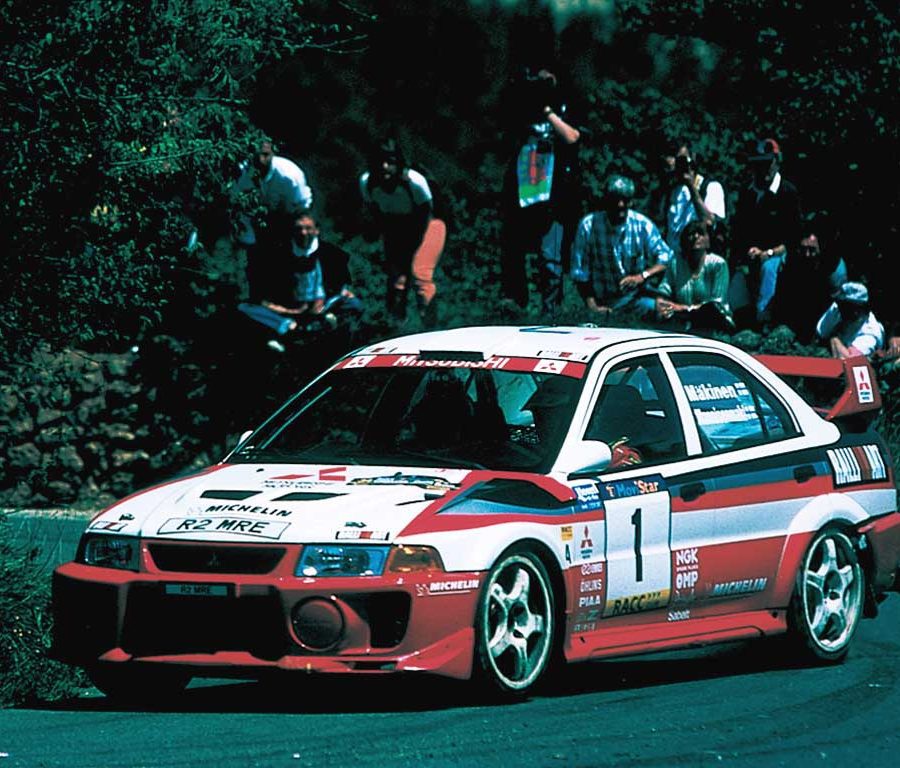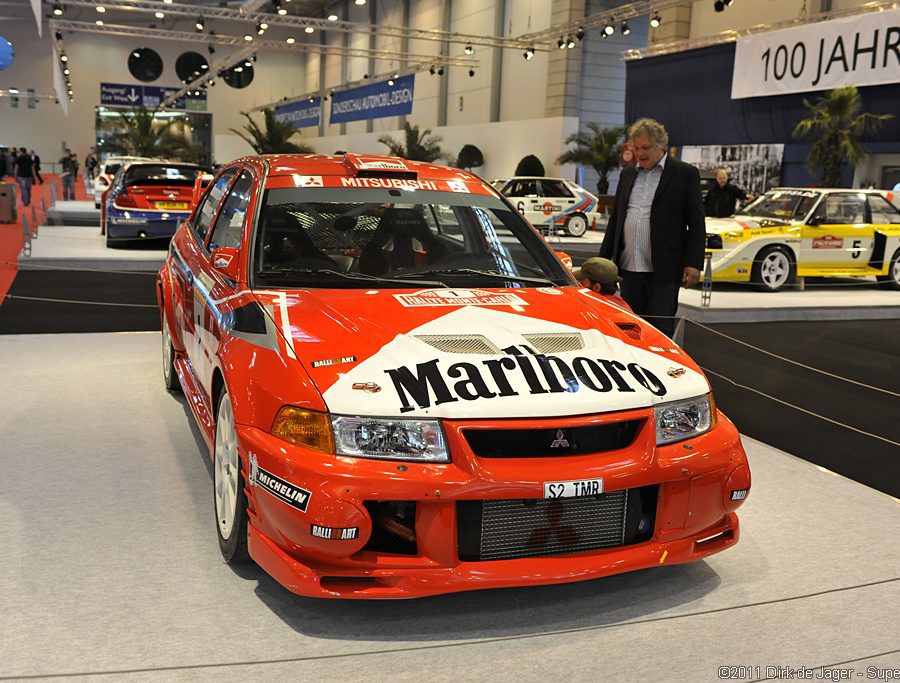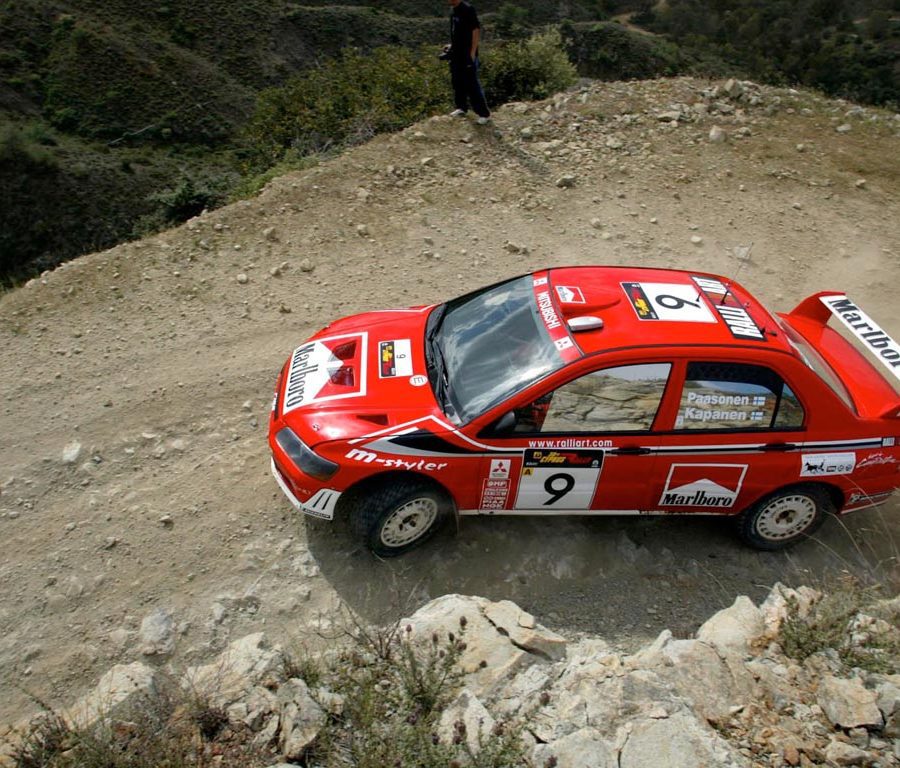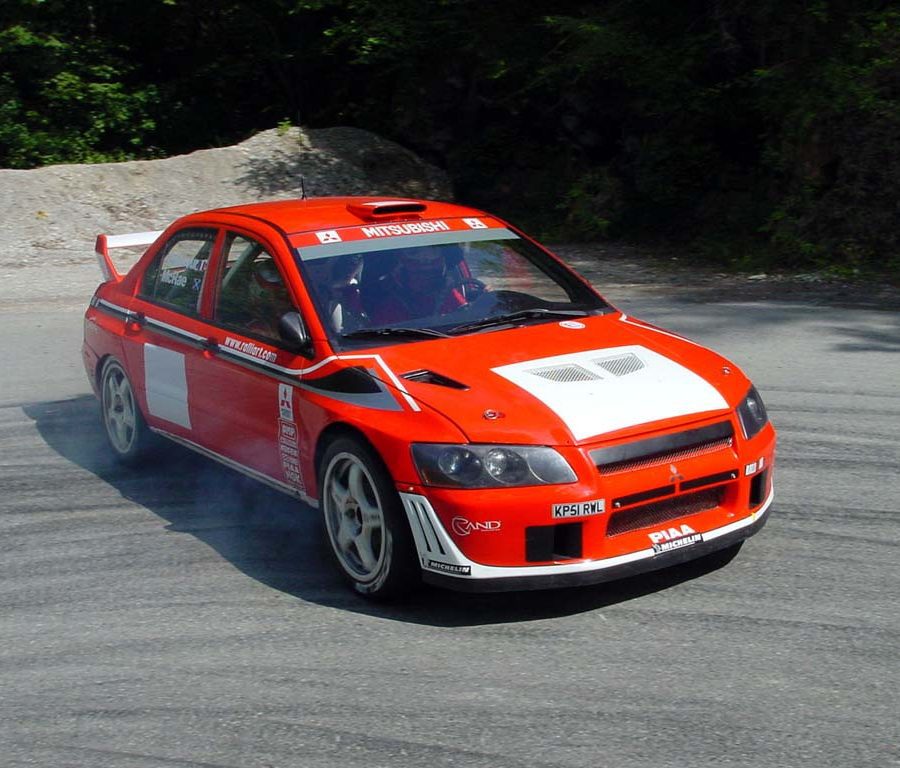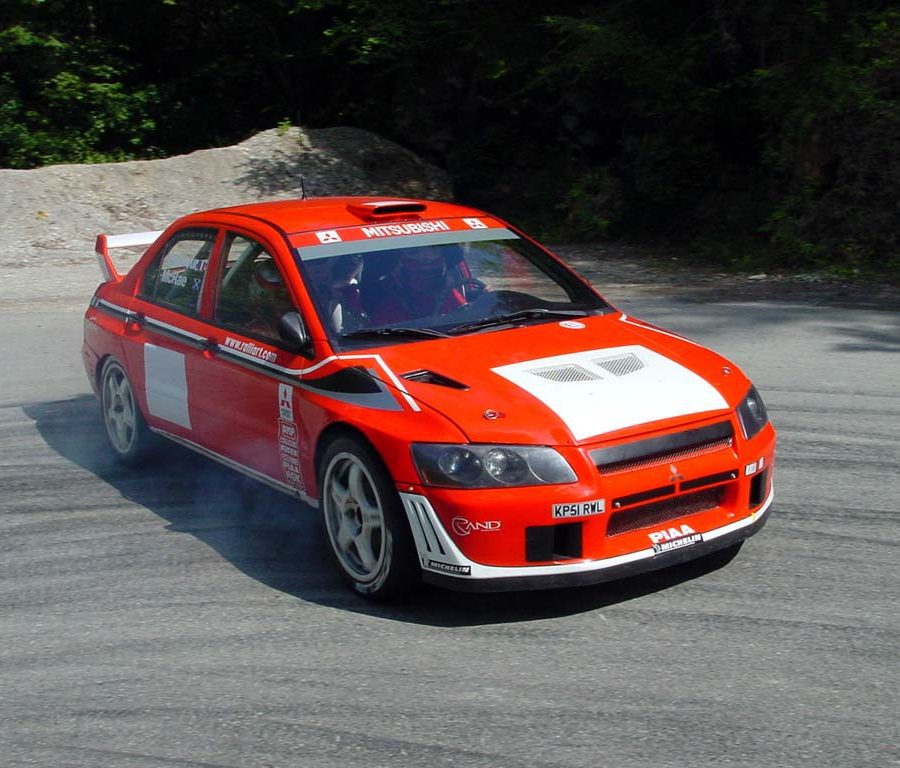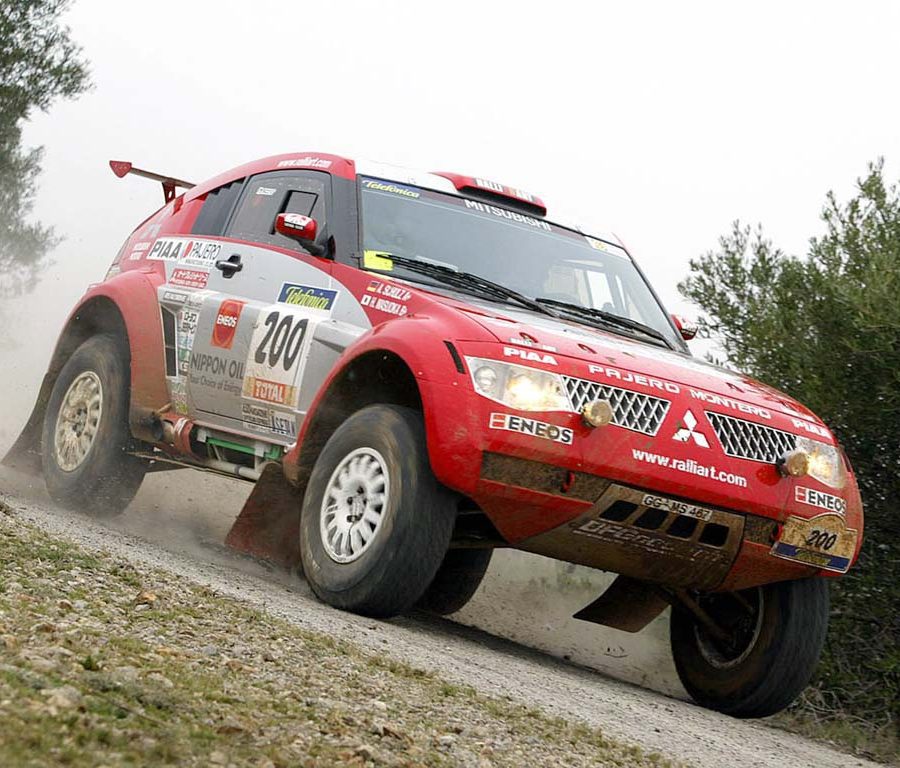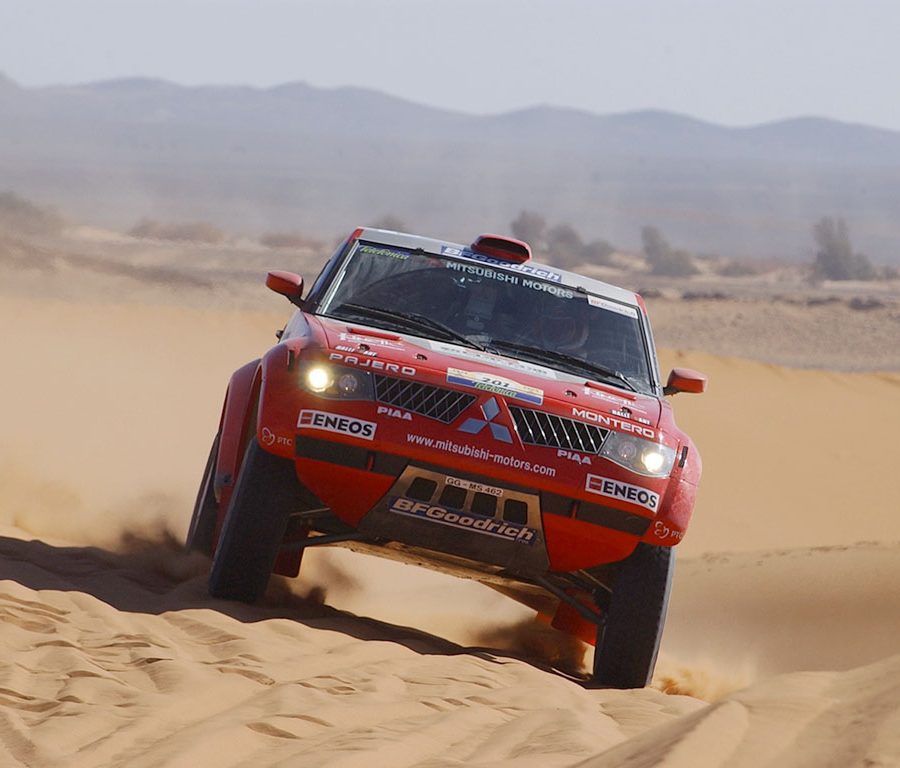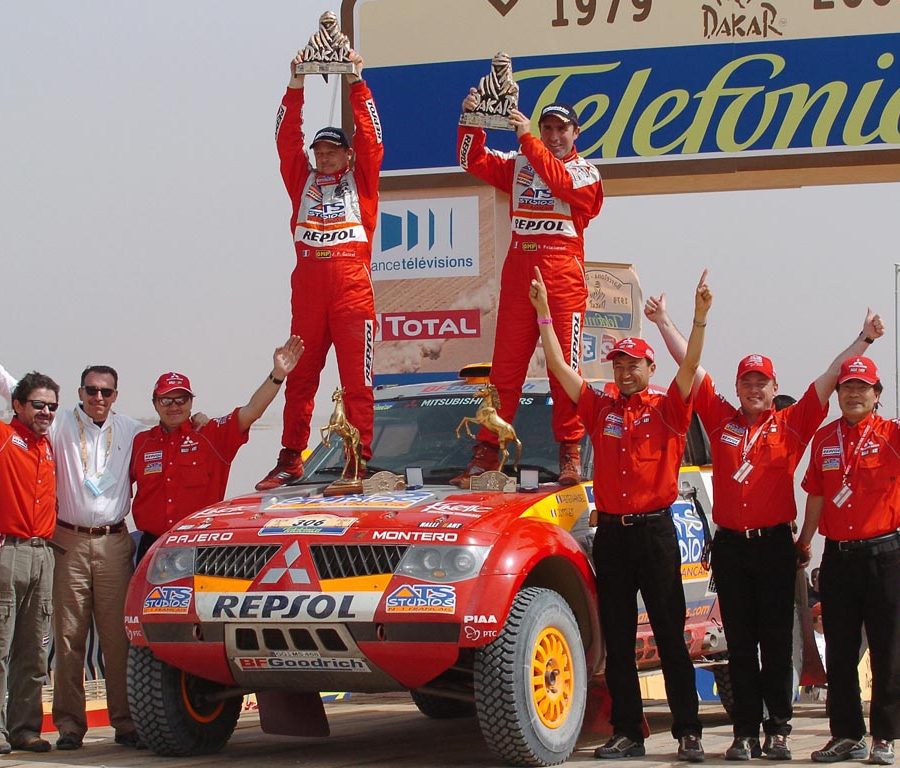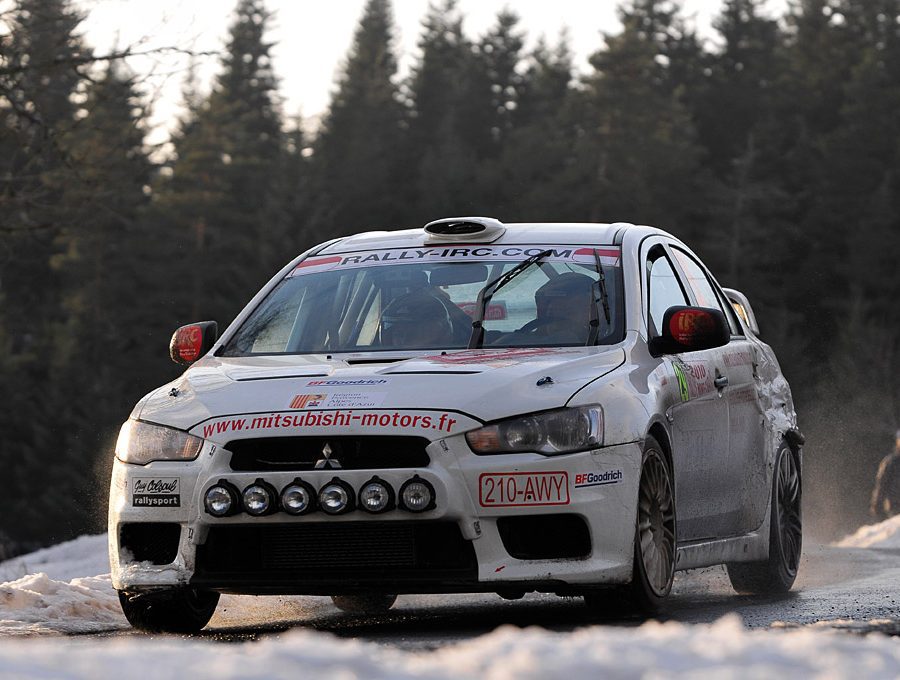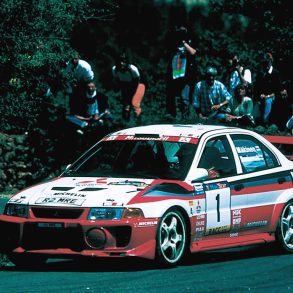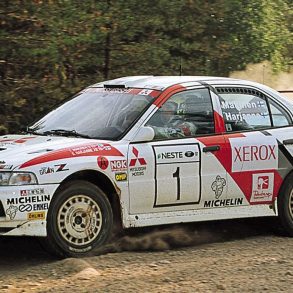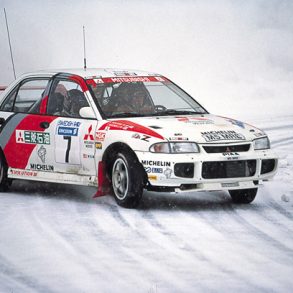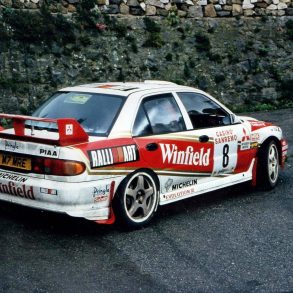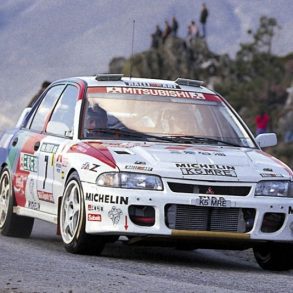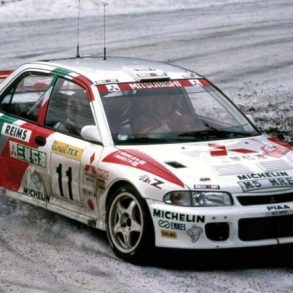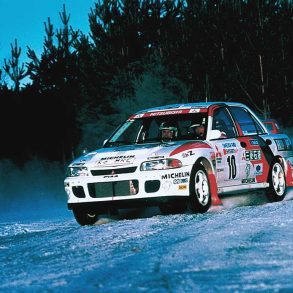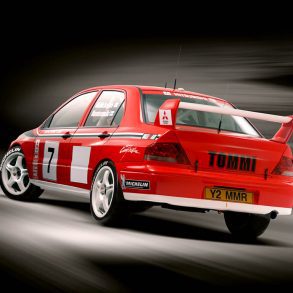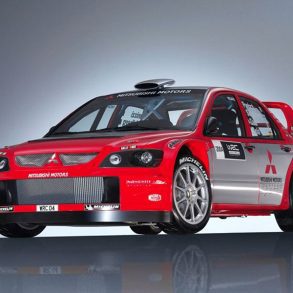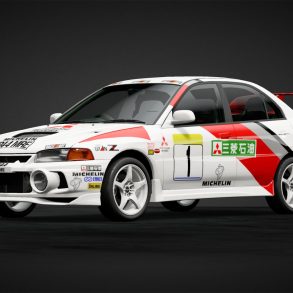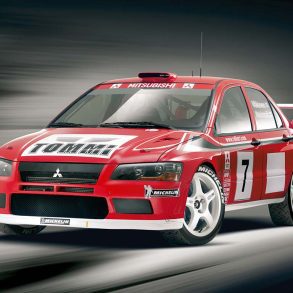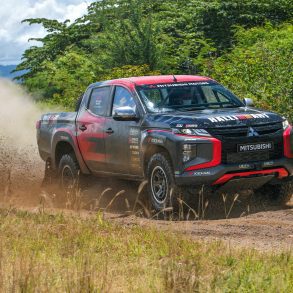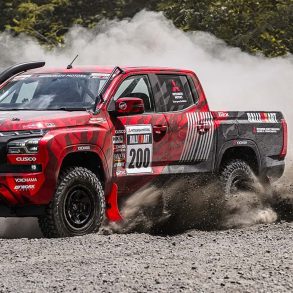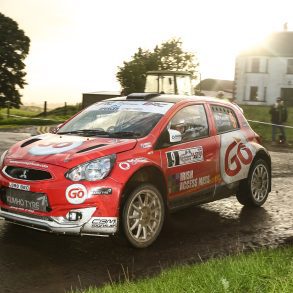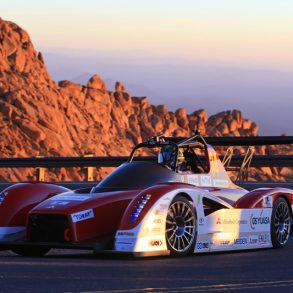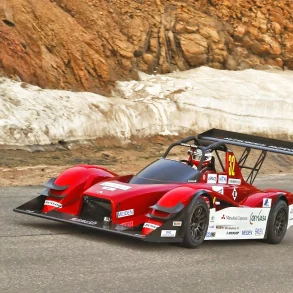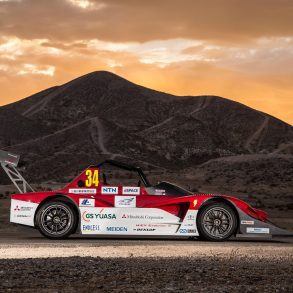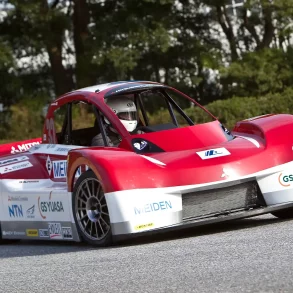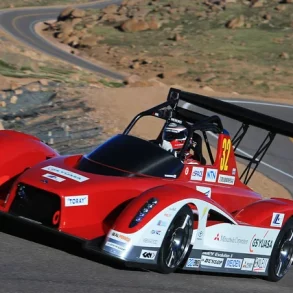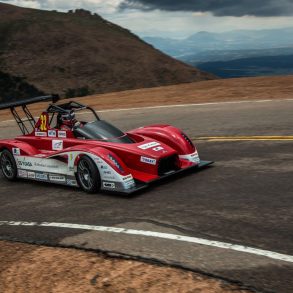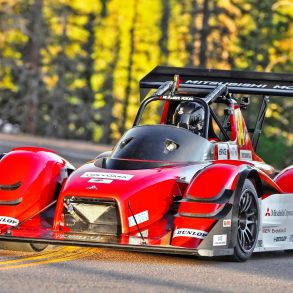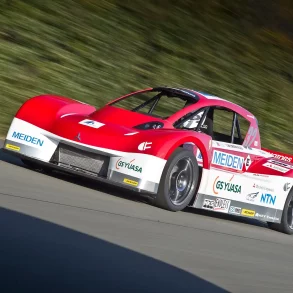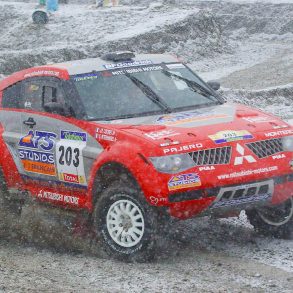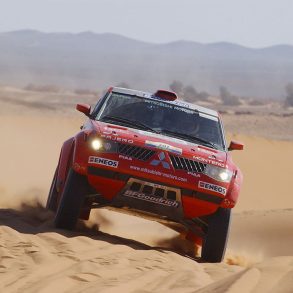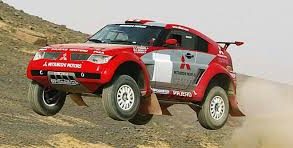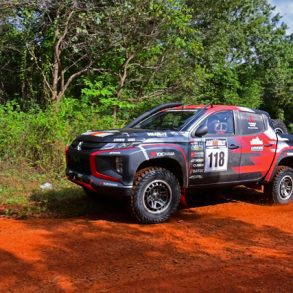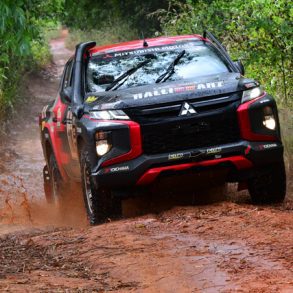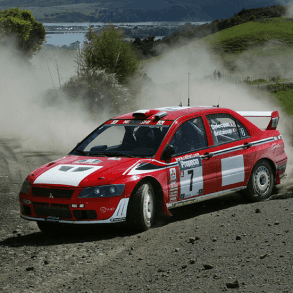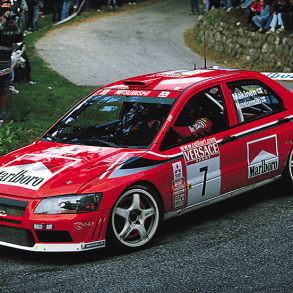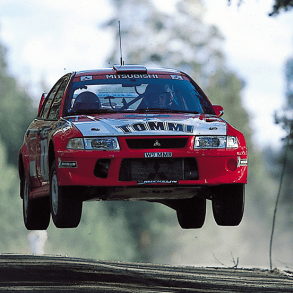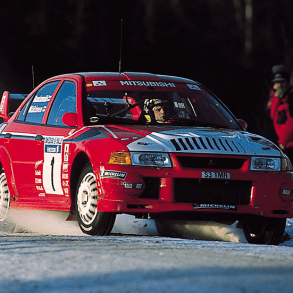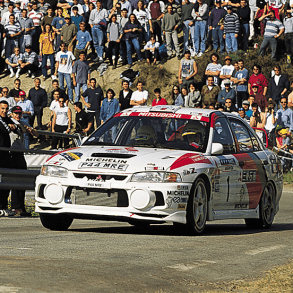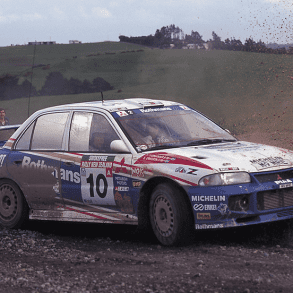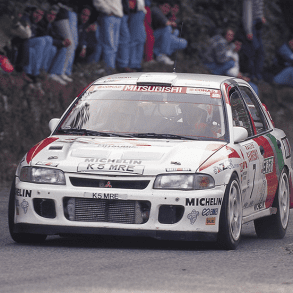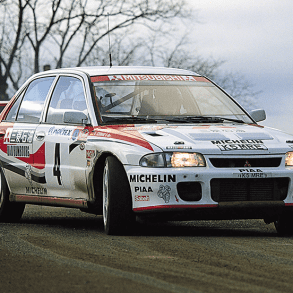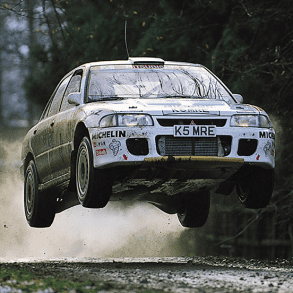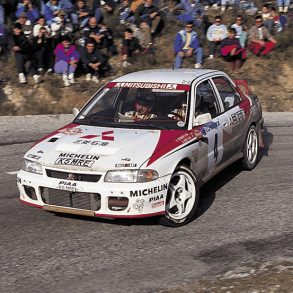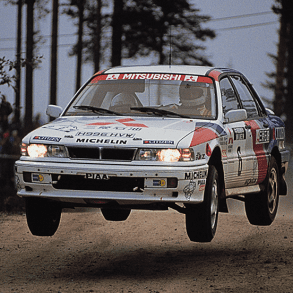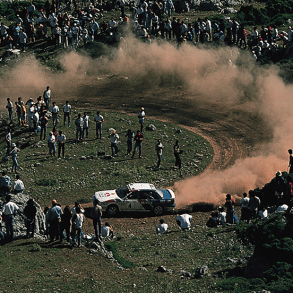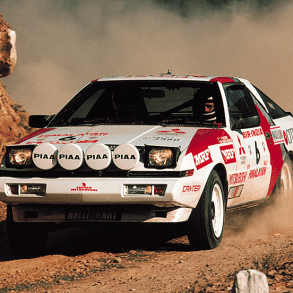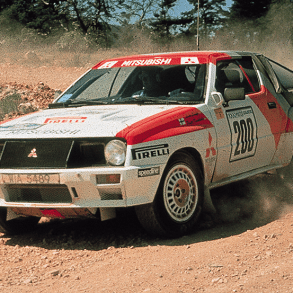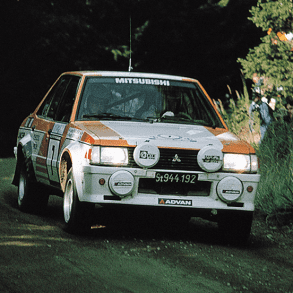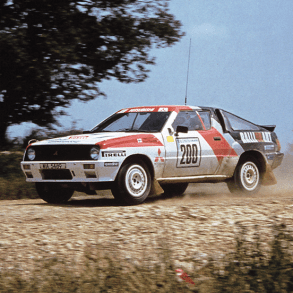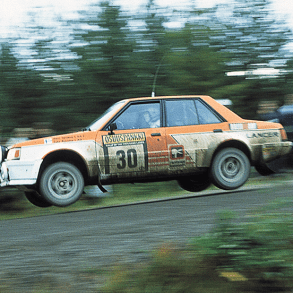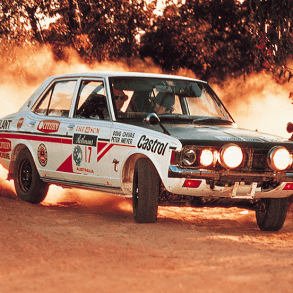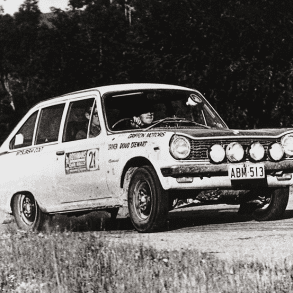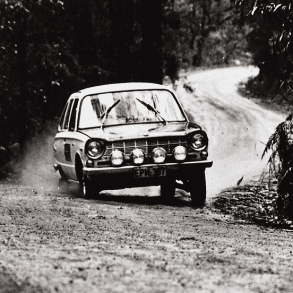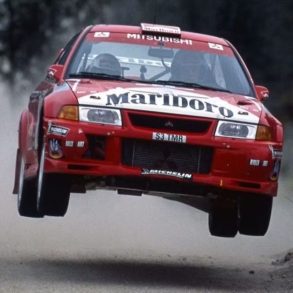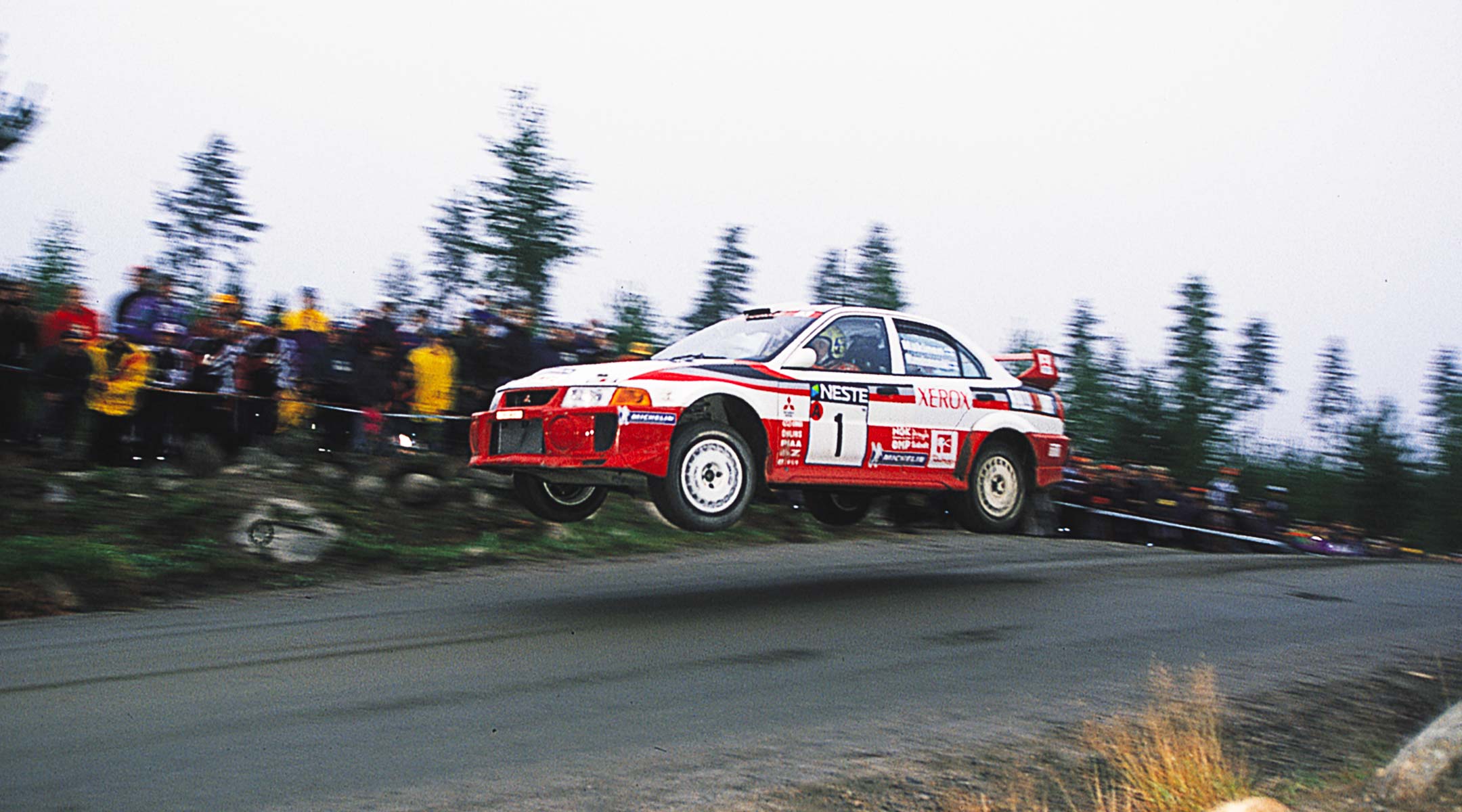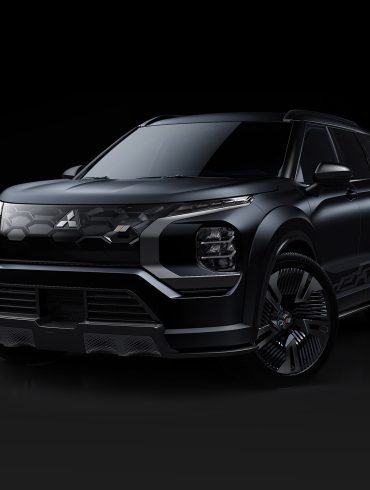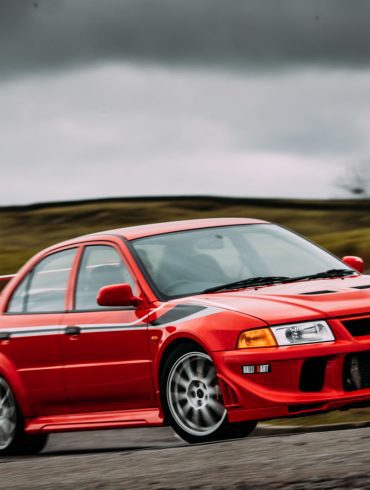1993 Mitsubishi Lancer Evolution Group A Thoughout the early ninties, Mitsubishi was quite sucessful with their rally-prepared Gallant. The car was driven to six WRC victories in 1992 before being replaced by the Lancer Evolution. It was this car, the Lancer Evolution, that would eventually bring more success to the...
Mitsubishi Race Cars
Buckle up and get ready to dive into the fast-paced world of Mitsubishi racing! For over five decades, Mitsubishi has carved its name into motorsport history, leaving a trail of dust and glory across various race disciplines. From the grueling challenges of rally racing to the high-octane adrenaline of track events, Mitsubishi has consistently pushed the boundaries of performance and innovation. This comprehensive guide will take you on a thrilling journey through Mitsubishi's racing legacy. We'll explore iconic vehicles like the legendary Evo that dominated the WRC, witness the prowess of Mitsubishi machines on the slopes of Pikes Peak, and delve into the brand's involvement in other exciting motorsports like touring cars.
Full Model List / Models In-Depth / Image Gallery / Best Mitsubishi Race Cars
Every Mitsubishi Race Car
Mitsubishi Motors, a name synonymous with automotive innovation, has also carved out a significant legacy in the world of motorsport. Over the decades, Mitsubishi has been involved in various forms of racing, from rallying to circuit racing, each chapter marked by remarkable vehicles that have not only competed but often dominated their fields. This article explores the storied history of Mitsubishi race cars, covering an array of models that have left an indelible mark on the racing world.
No discussion of Mitsubishi's racing heritage is complete without mentioning the Lancer Evolution series. Developed primarily for the World Rally Championship (WRC), the Evo series has been a dominant force in rallying from the early 1990s to the mid-2000s. With models like the Evo VI Tommi Mäkinen Edition, named after the legendary Finnish rally driver, Mitsubishi secured multiple championships and built a fanbase around the globe. Mitsubishi's prowess isn't confined to the dirt tracks of rally stages but extends to the mountainous climbs of the Pikes Peak International Hill Climb. The company achieved notable success with vehicles such as the electric-powered MiEV Evolution, which showcased Mitsubishi's commitment to combining performance with emerging electric vehicle technology.
Beyond the rally stages and mountainous terrains, Mitsubishi has also tested its mettle on the racing circuits. Cars like the Mitsubishi 3000GT VR-4 participated in endurance races, including the grueling 24 Hours of Le Mans, proving the brand's capabilities in high-speed track racing. Mitsubishi has also left a significant footprint in the sands of the Dakar Rally, the Mitsubishi Pajero/Montero is perhaps the most celebrated model in this arena, having won the Dakar Rally multiple times and becoming almost synonymous with off-road endurance racing. On the tarmac of the world's touring car championships, Mitsubishi continued to showcase its engineering excellence. The Galant VR-4 and later the Lancer Evolution models competed in various national and international touring car championships, securing numerous victories and further solidifying Mitsubishi’s reputation in motorsport.
This article offers just a glimpse into the vast and vibrant world of Mitsubishi's racing history. For enthusiasts and fans, each model and race represent a significant chapter in the broader narrative of motorsport.
Mitsubishi Dakar Racers
Mitsubishi Pajero Proto (1983)
Mitsubishi Pajero (1984)
Mitsubishi Pajero (1985)
Mitsubishi Pajero (1986)
Mitsubishi Pajero Proto (1987)
Mitsubishi Pajero Proto (1988)
Mitsubishi Pajero Proto (1989)
Mitsubishi Pajero (1990)
Mitsubishi Pajero (1991)
Mitsubishi Pajero Proto (1992)
Mitsubishi Pajero Proto (1993)
Mitsubishi Pajero Proto (1994)
Mitsubishi Pajero Proto (1995)
Mitsubishi Pajero (1996)
Mitsubishi Pajero T2 (1997)
Mitsubishi Pajero T2 (1998)
Mitsubishi Pajero T2 (1999)
Mitsubishi Pajero T2 (2000)
Mitsubishi Pajero T2 (2001)
Mitsubishi Pajero Super (2002)
Mitsubishi Pajero Super (2003)
Mitsubishi Pajero Evo (2004)
Mitsubishi Pajero Evo (2005)
Mitsubishi Pajero Evo (2006)
Mitsubishi Pajero Evo (2007)
Mitsubishi Pajero Evo (2009)
Mitsubishi WRC Racers
Mitsubishi Colt 1000F (1967)
Mitsubishi Colt 1100F (1968)
Mitsubishi Colt 11F SS (1969)
Mitsubishi Galant 16L GS (1971 - 1973)
Mitsubishi Galant GTO 17X (1972)
Mitsubishi Lancer 1600GSR (1973 - 1977)
Mitsubishi Lancer EX2000 Turbo (1981 - 1983)
Mitsubishi Starion 4WD (1984 - 1985)
Mitsubishi Starion 4WD Turbo (1986 - 1987)
Mitsubishi Galant VR-4 (1988 - 1992)
Mitsubishi Lancer Evo (1993)
Mitsubishi Lancer Evo Ⅱ (1994)
Mitsubishi Lancer Evo Ⅲ (1995 - 1996)
Mitsubishi Lancer Evo Ⅳ (1997)
Mitsubishi Lancer Evo Ⅴ (1998)
Mitsubishi Lancer Evo Ⅵ (1999 - 2000)
Mitsubishi Lancer Evo WRC (2001 - 2002)
Mitsubishi Lancer Evo WRC2 (2003)
Mitsubishi Lancer WRC04 (2004)
Mitsubishi Lancer WRC05 (2005)
Pikes Peak / Other
Mitsubishi i-MIEV Evo (2012)
Mitsubishi_i (2012)
Mitsubishi MiEV Evo Ⅱ (2013)
Mitsubishi Outlander PHEV (2013)
Mitsubishi MiEV Evo Ⅲ (2014)
Mitsubishi Outlander PHEV (2014)
Mitsubishi Outlander PHEV (2014)
Mitsubishi Outlander PHEV RallyCar (2015)
Mitsubishi Mirage R5 (2015)
Mitsubishi Triton Rally Car (2022 - 2024)
Mitsubishi Evolution IX Hillclimb (2007 - 2023)
Mitsubishi Lancer Evo X Touring (2009)
Mitsubishi Lancer Evolution Final Edition Gr.4
Mitsubishi Lancer Evolution Final Edition Gr.3
Mitsubishi FTO LM Race Car
Mitsubishi FTO Super Touring Car
Mitsubishi Lancer Evolution Final Edition Gr.4
Mitsubishi GTO LM Edition
Mitsubishi GTO LM Edition '99
Mitsubishi Taeivon Trampio FTO (JGTC) '99
Our Favorite Mitsubishi Race Car Images
Mitsubishi didn't mess around when it comes to rally racers designed to win.
Best Mitsubishi Race Cars Ever Created
We Pick The Five Greatest Mitsubishi Racers
Mitsubishi, a name synonymous with automotive innovation, has been a prominent force in the racing world for decades. From the dusty trails of Dakar to the high-speed circuits of the World Rally Championship, Mitsubishi's race cars have not only competed but have often dominated. In this article, we explore some of the most iconic and successful Mitsubishi race cars ever created. The Lancer Evolution series, affectionately known as the "Evo," has been a staple in both rally racing and on the road. Each iteration of the Evo has built on the success of its predecessors, with technological advancements that have consistently pushed the boundaries of what a four-door sedan can do on a race track.
Dominating the Dakar Rally in the late 20th and early 21st centuries, the Mitsubishi Pajero (also known as the Montero in some markets) became almost synonymous with rally raid success. Its rugged durability and powerful performance under harsh conditions made it a legend, winning the Dakar Rally multiple times and securing its place in the annals of motorsport history.
A lesser-known but no less impressive race car is the Mitsubishi Starion 4WD. Designed for Group B rally racing, although it never competed officially due to the group's dissolution, the Starion 4WD featured advanced technology that would influence Mitsubishi's future race cars, including the sophisticated all-wheel-drive systems seen in later Evo models. Before the Evo, there was the Galant VR-4. It was a pioneering vehicle that introduced many to the potential of all-wheel drive in sedans. Winning rallies across the globe, the VR-4 helped establish Mitsubishi's reputation in motorsports, serving as a testbed for the technologies that would define the brand's future successes in racing.
These vehicles represent just a slice of Mitsubishi's rich racing heritage. Each model not only pushed the envelope in terms of technology and performance but also helped to forge a lasting legacy that continues to influence the design and engineering of race cars today. Whether on the gravel, the tarmac, or the sand, Mitsubishi race cars have proven time and again that they are among the best in the world.
1. Mitsubishi Lancer Evo
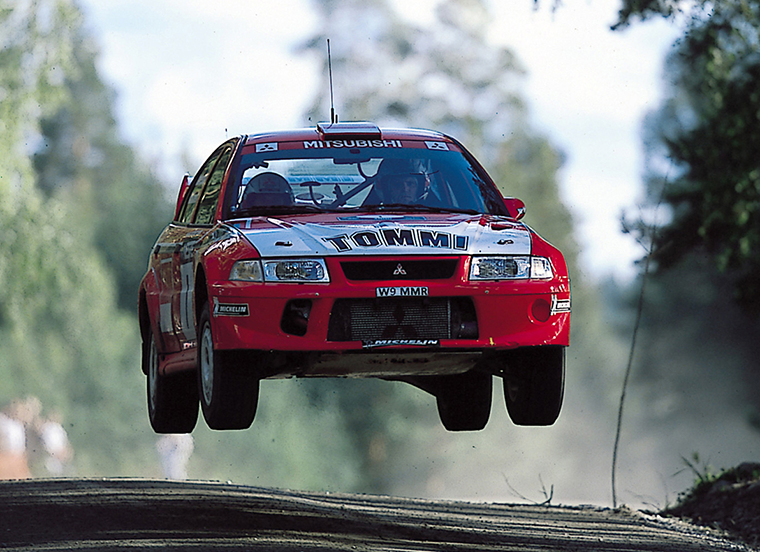
Legendary, purpose-built machines that dominated rally scene with their advanced AWD systems, turbo engines and championship victories.
Why Is This The Best Mitsubishi Race Car?
Mitsubishi’s Evolution series, commonly known as the Evo, represents a perfect blend of street legal and rally car technology, making it one of the most successful rally car lineages in the history of motorsports. Born from the world of competitive rallying, each iteration of the Evo has carried forward a legacy of speed, control, and sheer power.
The Mitsubishi Lancer Evolution debuted in 1992, built to satisfy the requirements of the World Rally Championship’s Group A class. The Evo was designed to compete directly with the likes of the Subaru Impreza WRX, another rally heavyweight. Mitsubishi’s approach was to take a compact sedan and equip it with a high-powered turbocharged engine and all-wheel drive, creating a machine that could handle any type of terrain at breakneck speeds.
Over the years, Mitsubishi released several versions of the Evo, each marked by incremental enhancements in technology, power, and handling. The early models, such as the Evo I, II, and III, were notable for their lightweight components and responsive engines, setting the stage for the advanced designs that would follow.
The Evo IV marked a significant turning point with the introduction of Mitsubishi’s Active Yaw Control (AYC), a technology designed to improve handling and traction by dynamically controlling torque split between the rear wheels. This technology became a cornerstone of the Evo’s design and was refined over subsequent models.
The Lancer Evolution’s prowess was not just theoretical. It quickly made its mark in the rally world, contributing to Mitsubishi’s overall dominance in the 1990s. The Evo VI, in particular, is celebrated for its role in Tommi Mäkinen’s four consecutive World Rally Championship (WRC) driver titles from 1996 to 1999. This model was known for its reliability, power, and the ability to perform under the pressure of the world’s toughest rally stages.
The Evolution X, introduced in 2007, was the final model in this illustrious line. While it was heavier and more luxurious than its predecessors, it was also equipped with a more powerful engine and the latest iteration of Mitsubishi’s all-wheel-drive technology, making it a fitting end to the Evolution series. Although it marked the end of an era, the Evo X demonstrated that Mitsubishi could adapt to modern demands for more comfort and stricter emissions standards without sacrificing its rally heritage.
The discontinuation of the Evo series in 2016 left many enthusiasts longing for more.
2. Mitsubishi Pajero Evolution
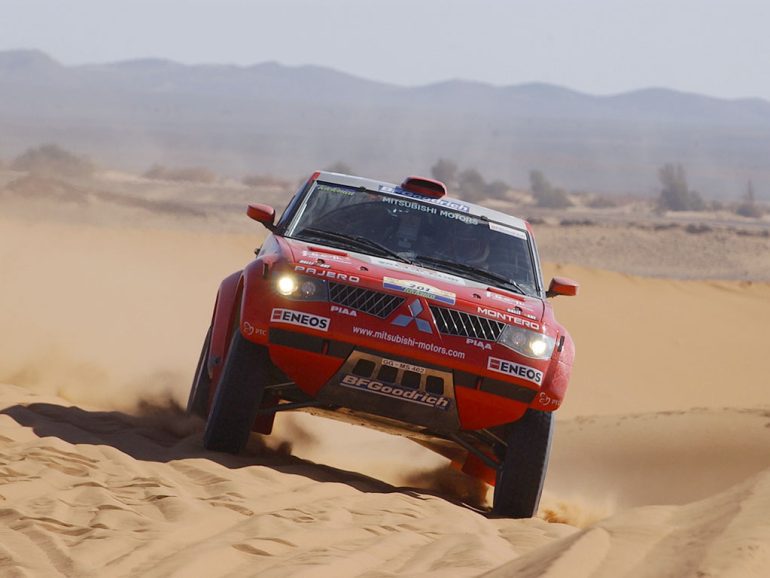
Between 1985 and 2007, Mitsubishi won the Dakar 12 times, with seven of its victories coming in succession. Unmatched champion.
Why Is This The Best Mitsubishi Race Car?
Technically, this is really the top dog in terms of Mitsubishi race cars, but we know the rally fans would have a conniption if and EVO didn't win this competition, so it sits in second place instead.
The Dakar Rally has the reputation to be the ‘world's toughest motor race’, and it was the brainchild of French adventurer Thierry Sabine. Although the vast desert stage was its most emblematic feature, stunning natural landscapes of Africa in mountainous and dense forest areas were also part of the program.
“I will show you the door to adventure. Only you can open it. I can take you along if you wish", Sabine once said. In the early days, racers competed for almost two weeks and covered an astonishing distance of 10,000 kilometers starting in Paris and finishing in Dakar, the capital of Senegal, in central Africa.
Mitsubishi first got involved in 1983, and claimed their first victory at their third attempt in 1985. The Pakero/Montero entered the Dakar Rally 26 times and won a total of 12 victories with an unprecedented seven consecutive wins to become known to all motorsports fans around the world as the “King of the Desert”.
3. Mitsubishi Galant VR-4
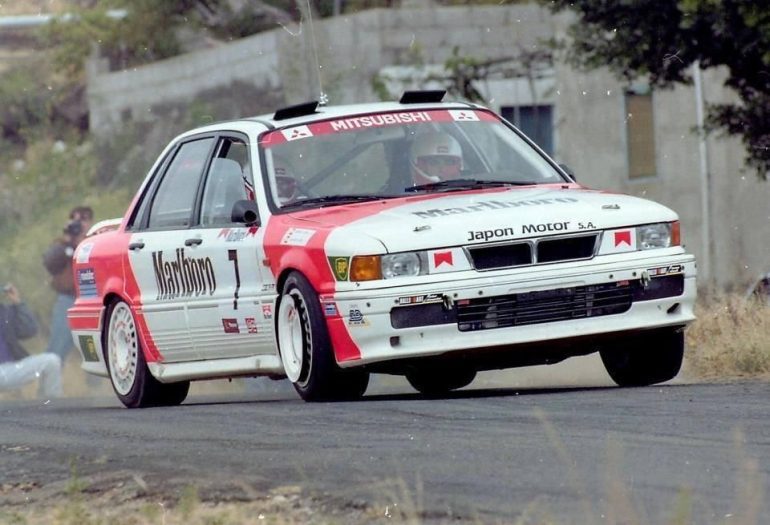
Pioneering vehicle that introduced many to the potential of all-wheel drive in sedans. Winning rallies, it showed Mitsubishi was onto something.
Why Is This The Best Mitsubishi Race Car?
The Mitsubishi Galant VR-4 might not have the immediate name recognition of its sportier descendant, the Lancer Evolution, but in the annals of rally racing history, it holds a significant place as one of the foundational pillars of Mitsubishi's motorsport legacy. With its powerful engine, advanced technology, and all-wheel-drive system, the Galant VR-4 was a formidable competitor in the late 1980s and early 1990s, setting the stage for the later successes of the Evo series.
Introduced in 1987, the Galant VR-4 was Mitsubishi's answer to the growing demand for high-performance, all-wheel-drive sedans that could compete in the Group A category of the World Rally Championship (WRC). The car was equipped with a 2.0-liter turbocharged inline-four engine, producing power outputs that were remarkable for its time. This engine was paired with a sophisticated all-wheel-drive system, which later became one of the hallmarks of Mitsubishi's rally cars.
The VR-4 also featured four-wheel steering, a novelty at the time, which improved its handling and agility on the rally stages. Its ability to navigate the tightest of corners with precision made it a favorite among drivers looking for a competitive edge.
The Mitsubishi Galant VR-4's rally debut was met with instant success, proving its capabilities on a variety of challenging terrains. It quickly racked up victories in national championships around the world before stepping onto the larger stage of the WRC. Between 1988 and 1992, the Galant VR-4 earned a number of podium finishes and was a regular competitor in the top tier of rally racing.
One of the most significant moments in its career came in 1989, when Finnish driver Pentti Airikkala clinched victory at the RAC Rally, one of the most prestigious events in the WRC calendar. This win not only demonstrated the car's superior performance but also helped establish Mitsubishi as a serious contender in the world of international rally racing.
Although the Galant VR-4 was eventually succeeded by the more specialized Lancer Evolution, its impact on Mitsubishi’s approach to automotive design and motorsport cannot be overstated. The technologies developed for and proven by the Galant VR-4, such as all-wheel drive and turbocharging, became staples in Mitsubishi's subsequent performance models.
4. Mitsubishi Starion 4WD Rally
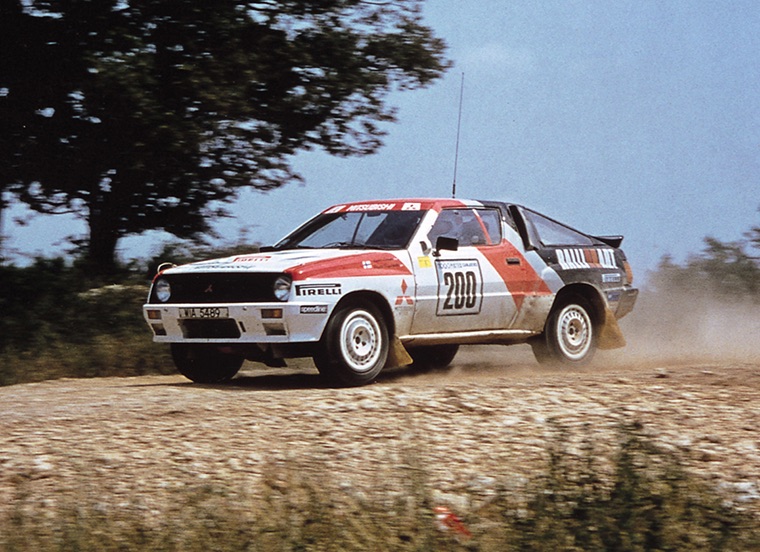
Group B rally racer (that never raced), its 4WD featured advanced technology that would influence future race cars, especially the Evo.
Why Is This The Best Mitsubishi Race Car?
The Mitsubishi Starion 4WD Rally car represents a unique chapter in the annals of motorsport history—a groundbreaking vehicle that promised to revolutionize the rally scene but never got the chance to prove its mettle in official competition. Developed during the mid-1980s, the Starion 4WD was Mitsubishi’s ambitious attempt to enter the legendary Group B rally category, known for its extremely powerful and sophisticated cars.
The Mitsubishi Starion, a sports coupe that was already popular for its performance and style, served as the base for this ambitious project. The rally version was equipped with a 2.0-liter turbocharged engine, which was capable of producing upwards of 350 horsepower—a significant output for its time. But the most innovative aspect of the Starion 4WD was its advanced all-wheel-drive system, designed to provide superior traction and handling on the diverse and often treacherous terrains of rally racing.
Additionally, the car featured a sophisticated suspension system and a lightweight body that incorporated advanced materials to minimize weight while maximizing strength and durability. These technological advancements were cutting-edge, positioning the Starion 4WD as a potential game-changer in the rally world.
The mid-1980s were a thrilling yet dangerous time in rally racing, largely due to the Group B classification, which had minimal restrictions on technology and power. Cars developed for Group B were among the fastest and most powerful rally cars ever conceived. Mitsubishi developed the Starion 4WD during this era with the hope of competing against dominant manufacturers like Audi, Peugeot, and Lancia.
However, the Group B era came to an abrupt and tragic end in 1986 following a series of fatal accidents involving both drivers and spectators. These incidents prompted the FIA (Fédération Internationale de l'Automobile) to disband the Group B category due to safety concerns, just as Mitsubishi was finalizing preparations for the Starion 4WD’s competitive debut.
Despite never competing officially, the Mitsubishi Starion 4WD did not fade into obscurity. Instead, it became something of a legend, known for what it might have achieved had it been allowed to race. The technologies developed for the Starion 4WD, particularly its all-wheel-drive system and turbocharging, were not lost; they laid the groundwork for future Mitsubishi rally cars, most notably the Lancer Evolution series.
5. Mitsubishi MiEV Evo Ⅲ
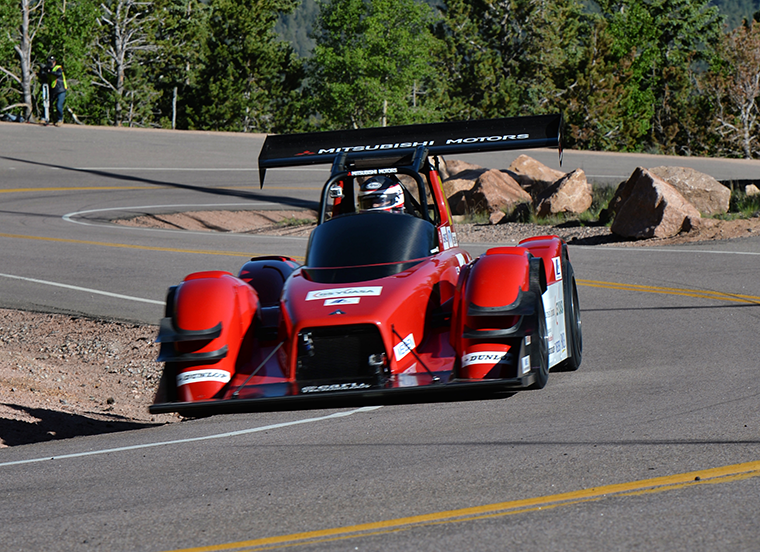
Pikes Peak played a significant role in the technical development of their electric vehicles and plug-in hybrids for Mitsubishi.
Why Is This The Best Mitsubishi Race Car?
Mitsubishi competed in the 2014 Pikes Peak International Hill Climb, the final year of their three-year plan, with two further advanced MiEV EVOLUTION III vehicles. The drivers were Hiroshi Masuok and Greg Tracy.
Their vehicles continued to evolve every year since they started competing. Their motors and batteries, based on mass-produced parts, initially had 3 motors and 240 kW in 2012. In 2013, it was powered up to 4 motors delivering 400kW, and, in 2014, the output of the 4 motors was brought to 450kW. In addition, thanks to the data collected so far, it was refined to increase its steering stability by incorporating aerodynamics appendices and a four-wheel control technology.
The race day was sunny. Tracy and Masuoka fought furiously to wipe away their regrets from the previous year, when their hopes were dashed by the rain. Pike Peaks’ 4,301 meters high summit was higher than that of Mt. Fuji, so the air was thinner. In those conditions, internal combustion engine-equipped cars’ power decreases, but electric vehicles are not affected.
On slippery roads, the integrated vehicle dynamics control system S-AWC prevented the machine from sliding and it brought a feeling of security to the driver who was on the attack. Tracy topped the rankings in the modified electric car class with a time of 9 minutes 08.188 seconds, significantly bettering his own record of the previous year. Masuoka achieved a time of 9 minutes 12.204 seconds taking second place.
Throughout the practice runs up to the race proper, it was a perfect result for MiEV EVOLUTION III with a first and second place finish. Tracy's record was close to 2.5 seconds behind the overall winner of the gasoline car class, demonstrating the potential of electric cars.


